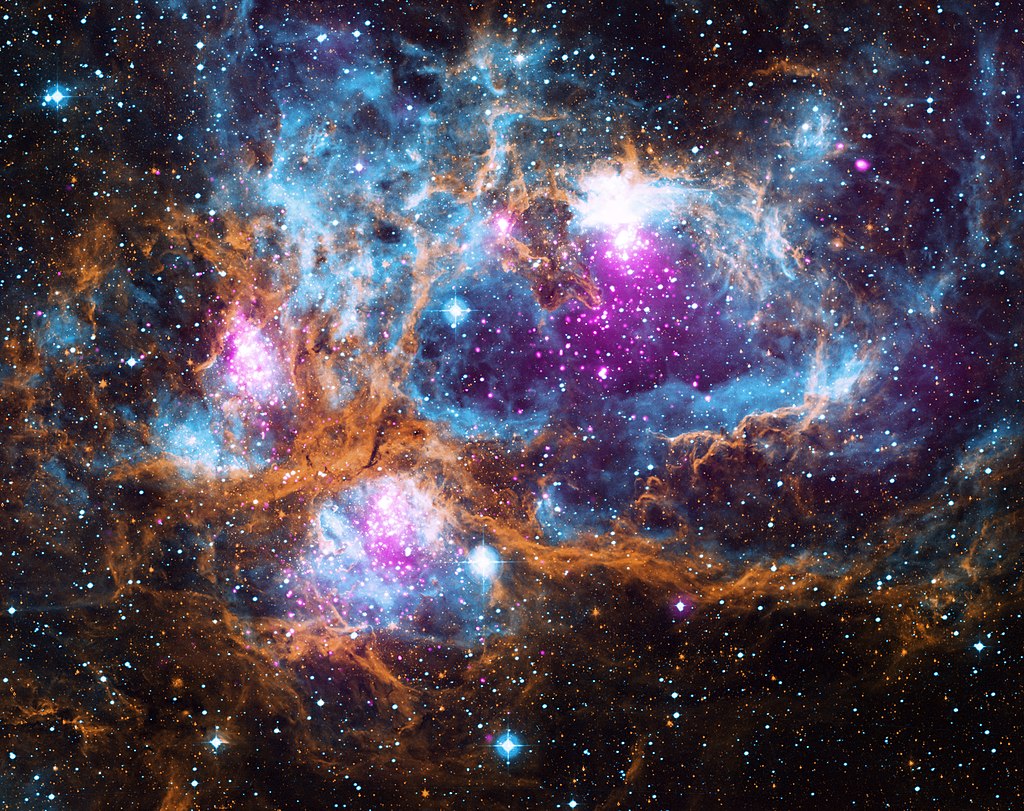The Orion Nebula is a favourite among stargazers, certainly one of mine. It’s a giant stellar nebula out of which, hot young stars are forming. Telescopically to the eye it appears as a grey/green haze of wonderment but cameras reveal the true glory of these star forming regions. The Sun was once part of such an object and astronomers have been probing their secrets for decades. Now, a new paper presents the results from a detailed study from the James Webb Space Telescope (JWST) that has been exploring planet forming disks around stars in the Lobster Nebula.
The concept that a stellar nebula collapses to form a star was first proposed in the early 1900’s by English astronomer James Jeans. Since then we have developed a model to describe not only the birth of stars but their evolution and subsequent death. The process goes on to describe how hot young stars are often accompanied by disks of material from the nebula and these proto-planetary disks can collapse to form planets.

To understand all aspects of planetary system formation it is important to study them in their varied environments, unfortunately these systems are not too common and often obscured by dust causing observational difficulties. Many of the young planetary systems form where there are high levels of UV radiation especially in massive star forming regions like 6357.
A fine example of a stellar nursery is the Lobster Nebula otherwise known by the less catchy title NGC6357 (from the New General Catalogue). The nebula is located in the constellation Scorpius at a distance of 6,000 light years – remember a light year is a measure of distance defined by the distance light can travel in one year. It’s easier to say 6,000 light years than 57,000,000,000,000,000km!
A team of astronomers have turned JWST onto NGC6357 to probe deep inside the nebula. The area under scrutiny hosts numerous massive OB stars, among them the most massive stars in the Galaxy. The team targeted 15 disks in three areas hoping it would help understand the impact of environment on planet formation. They studied a disk known as ‘XUE 1’ and explored its inner disk (within 10 astronomical units – 1 AU is the average distance between the Sun and Moon). In their paper they report on the abundance of water, carbon monoxide, hydrogen cyanide and acetylene to a distance of within 1 astronomical unit – this would be impossible without JWST.
The findings reveal that water and other molecules are present in the inner regions of the disk where the terrestrial planets might form. This is in a region which is perhaps one of the most extreme environments in the Galaxy. It shows that the conditions for terrestrial planet formation is as likely in high mass star forming regions as it is in low mass! The team also identified that dust grain growth has started with structures detected that could eventually lead to planets in systems at 0.5 Myr old. It seems then that planet formation may be well underway or indeed have happened despite the extreme environment.
Source : Molecular inventory in the inner region of an extremely irradiated Protoplanetary Disk

